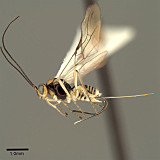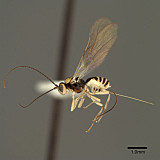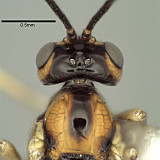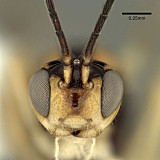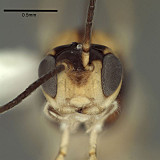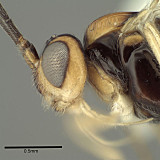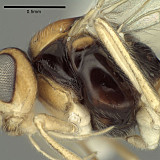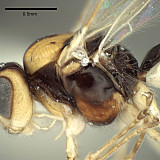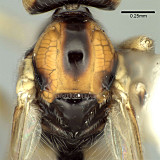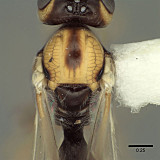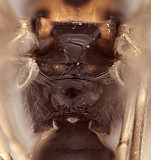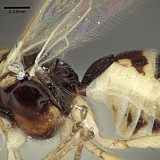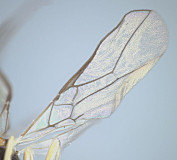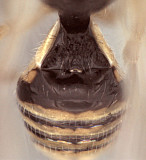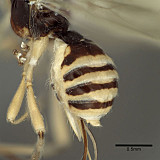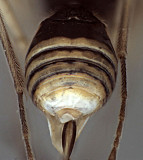Opius gabriellae Wharton, 2013
Ovipositor lengths given in the description are reasonable approximations since the base of the ovipositor is evident in both females, protruding against the sternites. The second submarginal cell of the male specimen is shorter and taller than in the females, but more specimens are needed to confirm this as evidence of sexual dimorphism. In O. gabriellae, the male is smaller than the females but in Opius danielsae , the females are smaller.
Holotype: Female, deposited in UNAM.
There are no specimens currently determined for this OTU, or those specimens determined for this OTU are not yet mappable.
MEXICO: Edo. de
Mexico
Rt. 890, Km 9 area
6km W Lago de Zempoala
2–x–1991 A. Norrbom
Second label:
reared ex capitulum
Senecio iodanthus
Greenm. 91(M)33 f
Probably ex. puparium
Paroxyna (Tephitidae)
This material is based upon work supported by the National Science Foundation under Grant Numbers DEB 0949027 and DEB 0328922 with REU supplement 1313933.
Any opinions, findings, and conclusions or recommendations expressed in this material are those of the author(s) and do not necessarily reflect the views of the National Science Foundation.

